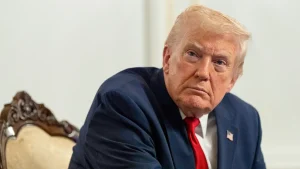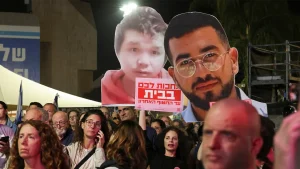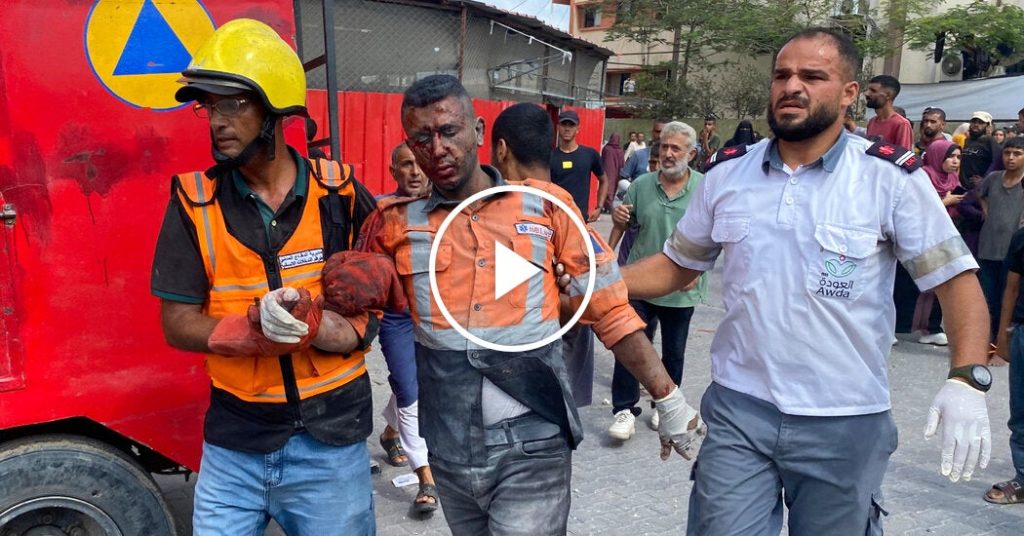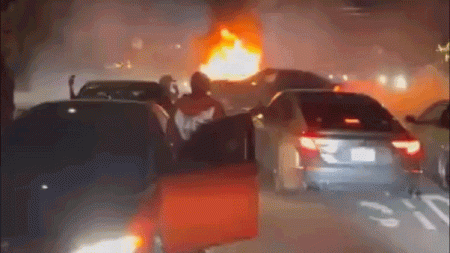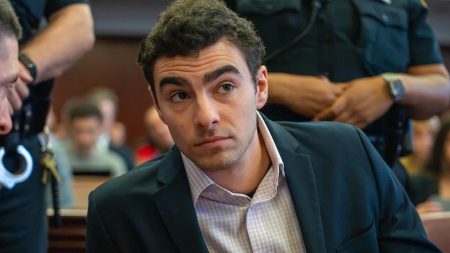Israeli Strike on Gaza Hospital Claims Lives of Five Journalists Amid Rising Civilian Casualties
Deadly Attack Marks Troubling Escalation in Media Casualties During Middle East Crisis
By Robert Keller, Senior International Correspondent
August 25, 2025
In a devastating development that has sent shockwaves through international media circles and humanitarian organizations, two Israeli airstrikes targeted a hospital in southern Gaza on Monday, killing at least five Palestinian journalists who were covering the ongoing conflict. The attack, which Gaza health officials report also claimed the lives of a rescue worker and up to 14 additional civilians, represents one of the deadliest single incidents involving media personnel since the conflict’s escalation. The strikes have reignited urgent concerns about press freedom, civilian protection in conflict zones, and the increasingly dangerous environment facing journalists reporting from Gaza.
The Attack: What We Know So Far
The incident occurred around midday on Monday when two separate Israeli strikes hit Al-Amal Hospital in southern Gaza, a medical facility that has been struggling to maintain operations amid severe shortages of medical supplies, electricity, and clean water. According to witnesses who survived the attack, the first strike hit the hospital’s eastern wing, where several journalists had gathered to document the arrival of wounded civilians from earlier bombardments. The second strike followed approximately three minutes later, hitting an area where first responders, including the deceased rescue worker, had rushed to assist victims of the initial explosion. Munir al-Bursh, Director-General of the Gaza Health Ministry, told reporters, “These journalists were clearly identifiable by their press vests and equipment. There was no military presence in or around the hospital.” International humanitarian law explicitly prohibits attacks on medical facilities, which retain protected status during armed conflicts unless demonstrably used for military purposes—a claim Israeli authorities have made about some Gaza hospitals but which has been disputed by medical staff and international observers.
The Journalists: Lives Cut Short While Reporting Truth
The five journalists killed in the attack have been identified as Khalil al-Masri, 38, a veteran photojournalist with the Palestine News Agency; Samira Hammad, 42, a correspondent for Al Jazeera Arabic; Tariq Abu Salim, 29, a freelance videographer who contributed to several international news outlets; Nasser al-Qudwa, 35, a reporter for Gaza Now news website; and Ibrahim Yousef, 26, a photojournalist with the local Gaza Press Agency. All five were experienced conflict reporters who had continued working throughout the crisis despite increasingly dangerous conditions. “These were not just colleagues but essential witnesses to a humanitarian catastrophe,” said Sherif Mansour of the Committee to Protect Journalists. “Their deaths represent not only personal tragedies but a devastating loss to the public’s right to information about what is happening in Gaza.” Since the conflict began, journalists in Gaza have faced extraordinary challenges including communications blackouts, fuel shortages limiting mobility, destruction of media offices, and the constant danger of airstrikes. Monday’s attack brings the total number of journalists killed during the current Middle East crisis to 43, according to the International Federation of Journalists—making this the deadliest period for media professionals in the region’s recent history.
International Reaction and Diplomatic Fallout
The hospital strike has triggered an immediate and forceful international response. UN Secretary-General António Guterres condemned the attack as “potentially a grave breach of international humanitarian law” and called for an independent investigation. The European Union’s foreign policy chief Josep Borrell described the incident as “completely unacceptable” and demanded accountability. The United States, Israel’s closest ally, expressed “deep concern” through State Department spokesperson Jessica Chen, who stated that “protecting civilians, including journalists and medical facilities, is paramount.” Human Rights Watch has called the incident “another apparent war crime in a conflict marked by impunity,” while Reporters Without Borders has filed a formal complaint with the International Criminal Court, citing a pattern of attacks on journalists that may constitute war crimes. Israeli government spokesperson Daniel Levy stated that the military was “reviewing the incident” and emphasized that “Israel takes all feasible precautions to avoid civilian casualties.” However, multiple eyewitness accounts from hospital staff and surviving journalists contradict claims that warnings were issued before the strikes. The incident threatens to further isolate Israel diplomatically at a time when international pressure for a ceasefire has been intensifying.
The Broader Context: Healthcare System on the Brink
Monday’s attack occurs against the backdrop of a healthcare system in total collapse. According to the World Health Organization, only 11 of Gaza’s 36 hospitals remain even partially functional, with most operating far beyond capacity and with critical shortages of essential supplies. Dr. Helena Rancourt of Médecins Sans Frontières, who was working at a nearby facility, described the situation as “beyond catastrophic.” “Hospitals should be sanctuaries, but they have repeatedly become targets,” she told this reporter via secure messaging. “Medical staff are performing surgeries without anesthesia, reusing disposable equipment, and making impossible choices about who receives care.” The targeting of Al-Amal Hospital further reduces Gaza’s dwindling medical capacity at a time when an estimated 70% of the territory’s 2.3 million residents have been displaced, many multiple times, and when waterborne diseases are spreading due to contaminated water supplies and overcrowded shelter conditions. The World Food Programme reports that acute malnutrition rates have tripled among children under five, creating what WFP Director Valerie Guarnieri called “a perfect storm of health crises converging on a population with nowhere to flee.”
Press Freedom Under Fire: A Dangerous Precedent
Media advocacy organizations warn that the pattern of journalist casualties in Gaza represents an existential threat to independent reporting from conflict zones. “When journalists are killed with impunity, the message is clear: powerful actors don’t want witnesses to their actions,” said Columbia Journalism School professor and former war correspondent Eliza Montgomery. The physical risks compound existing challenges to reporting, including digital surveillance, restricted access, and what some observers call “information warfare” where competing narratives cloud factual reporting. Robert Mahoney, Deputy Executive Director of the Committee to Protect Journalists, noted that “without journalists on the ground in Gaza, the world relies on official statements rather than verified reporting—precisely when independent eyes are most needed.” The technological landscape has changed how conflict journalism operates, with many Gaza journalists sharing footage directly through social media when traditional outlets cannot operate. However, this increased visibility can make them targets. Mohammed al-Hajjar, a Gaza journalist who knew all five victims, told this publication that his colleagues had recently discussed whether their press identification made them safer or placed them at greater risk. “We concluded we had no choice but to continue documenting what happens here,” he said in a voice message sent hours after the hospital attack. “But we knew the cost might be our lives.”
The Road Ahead: Calls for Accountability and Protection
As funerals for the journalists and other victims are planned, calls for accountability have gained momentum across diplomatic channels and civil society. The International Press Institute has launched an emergency appeal for enhanced journalist protection mechanisms in conflict zones, while the Foreign Press Association is lobbying for the implementation of UN Security Council Resolution 2222, which specifically addresses the protection of journalists in armed conflicts. Meanwhile, humanitarian organizations emphasize that the hospital attack represents not just a crisis for press freedom but part of a broader pattern affecting civilians throughout Gaza. “When hospitals, schools, journalists, and aid workers are hit repeatedly, we must question whether these are truly accidents,” said International Rescue Committee Director Sophia Williams. For the families of those killed, including the journalists who documented Gaza’s suffering until their final moments, questions of international law and global politics pale beside their immediate grief. Nour al-Masri, sister of slain photojournalist Khalil, spoke briefly at a small gathering in Khan Younis. “My brother believed the camera was more powerful than weapons,” she said. “He died holding his camera, telling Gaza’s story to a world that too often looks away.” As darkness fell over Gaza Monday night, colleagues of the fallen journalists vowed to continue their work—a dangerous but essential mission to document a conflict that has claimed thousands of lives, destroyed crucial infrastructure, and left millions facing an uncertain future in one of the world’s most volatile regions.
